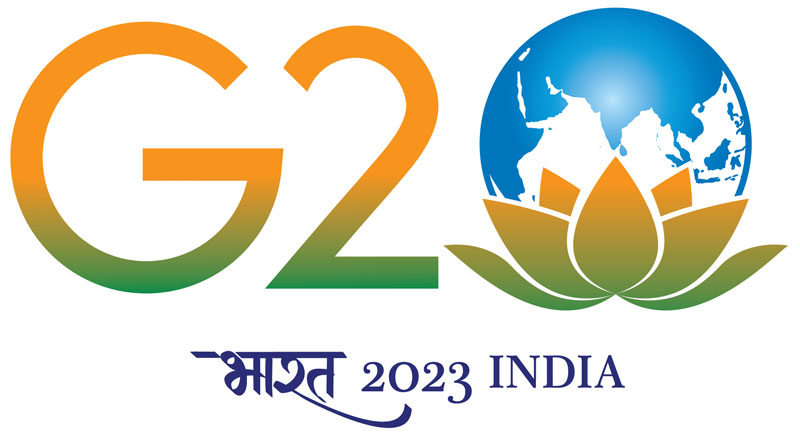By: Pramathesh Ambasta, Former CEO, BRLF
As the world struggles to come to terms with the shapeshifting Covid-19 virus, the views of the Hon’ble President of India, Shri Ram Nath Kovind, become particularly resonant. Writing about the relentless drive to control nature and exploit its resources, he urged a reflection on how nature, through the pandemic, is telling “us to acknowledge with humility our quintessential equality and interdependence.” This is a view that is difficult to disagree with. Many scientists have voiced the same opinion that the pressure on natural habitats, disruptions in local ecosystems, and loss of biodiversity cause decreasing distance between humans and other organisms and a loss of traditional hosts for viruses, resulting in a rapid spread of such infections and perhaps also of the destruction of earlier immunity.
The same set of causes underly another crisis that looms large on our horizon – the climate change crisis, challenging our very future together. Studies have confirmed that there is generally a secular tendency towards warming the Indian sub-continent. The Planning Commission’s 12th Plan document (Volume II) notes “a distinct trend towards both drier and warmer weather, particularly during the last three Plan periods.” Trends in monsoon and annual rainfalls show a decline, and trends in mean temperatures show an increase.
While climate change and the pandemic are global phenomena that affect everyone, they do not impact everyone equally. Poverty is one of the most critical factors determining vulnerability to disasters and one which limits adaptive capacity.
As Nicholas Stern, speaking at the University of Oxford in 2015, put it:
“Managing climate change and reducing poverty have been referred to as the two defining challenges of our century. If we fail to manage climate change, we will create a hostile environment where lives and livelihoods will be destroyed. However, if we try to manage climate change in ways, which put barriers to overcoming poverty, we will not have the coalition we need to manage climate change. If we fail one, we fail the other.”
People living in poverty tend to rely more on climate-sensitive sectors such as agriculture and water for livelihoods. Poverty also means limited resources to fall on the back or recover quickly from shocks caused by disasters such as the pandemic. Studies also point to the fact that crises and disasters have a particularly negative impact on women.
What does the preceding discussion mean for India’s poor? It is pertinent to remember that the poorest and the most vulnerable in India are located in the rainfed areas of the country. And it is here that the maximum impact of both crises is felt. The central Indian tribal belt is almost entirely rainfed and home to three-fourths of India’s Adivasi population. Consider the following – only 22% of tribal landholdings are irrigated, and the share of tribal landholdings in the Gross Irrigated Area of the country is just 6.2%. Across all social groups, the human development index is the worst for the tribals.
Is there a way out of this? BRLF’s work with its civil society partners grapples centrally with this question and attempts to put in place an approach in its work geography. In this vision of change, the Mahatma Gandhi NREGA is crucial. Through proper planning and execution of water-related works under MGNREGA, livelihoods of the poorest in the country can be put on a sustainable footing while at the same time leading to favorable environmental outcomes in the form of local and global ecological services such as groundwater recharge, soil moisture retention, water conservation, biodiversity conservation, and carbon sequestration. In all our partnerships with the state governments of West Bengal, Chhattisgarh, and Jharkhand, it is precisely this power of MGNREGA that BRLF and its partners seek to leverage to change the lives of the poorest while restoring environmental health. Civil society partners work together with Gram Panchayats to create and implement MGNREGA plans for water conservation, erosion control, and groundwater recharge in these projects.
At the same time, the understanding that mere supply-side approaches will not be sufficient and that we need to look at the demand side also guides our interventions. An alternative approach to agriculture that uses less water and energy merits consideration. Hence our emphasis is on No-Pesticide Agriculture. We seek to consolidate this approach in our agriculture programs, particularly with the Government of Odisha in our Agriculture Production Clusters program. At the same time, in our project supported by the European Union, we try upscale alternatives that promote clean energy and drinking water.
These projects are relatively large in scale. For example, the Usharmukti program in West Bengal is spread across 55 blocks, and the Odisha APC project is across 40 upland tribal blocks of the state. The interventions have benefitted thousands of poor Adivasi households, lifting them from poverty. While doing so, the environment is regenerated, denuding catchments of rivers treated, and the ecosystem’s health is restored. These programs also served as a lifeline for people experiencing poverty when the Covid-19 pandemic hit the economy.
The above examples show that we can solve the challenges we face at scale if communities, civil society, and governments unite. If we are to truly absorb the lesson of co-dependence that the pandemic is holding out for us, we need to embark upon a co-action plan very soon.


